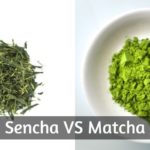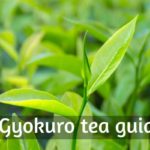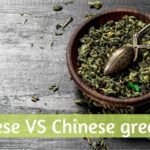Matcha in teabags and powder form seems to be a bit of a debate lately. Some say the teabag version is worth it, mush less hassle and just generally easier to work with.
Others maintain that true Matcha will always need to be frothed with actual Matcha powder, and there's no need to bring teabags into this.
That's also the stance I'm supporting, so let's get into the main differences between powder Matcha and teabag Matcha. Just so we're all on the same page.

Table of Contents
1. Matcha powder has actual Matcha in it
The first reason I'd say you should stick with Matcha powder is because it's going to bring you actual Matcha.
The way Matcha is made means that it's kind of a premium item, and as such many companies might try to cut corners and present a Matcha as a blend, when instead it's not 100% Matcha.
With powdered Matcha this is not the case, since you're getting the real thing. With rules, regulations and grades that need to be respected in order to call a Matcha a certain grade or another.
Meaning, your powdered Matcha is always going to be 100% pure Matcha, made of actual shade-grown tea leaves that were steamed and de-veined and dried and crushed into a fine powder.
If your Matcha were to contain something else, you'd notice it right away, since the flavor of Matcha is very specific.
Even food-grade Matcha is better or purer than teabag Matcha, so go for that one if money is a little tight.
2. Teabags are often lower quality
This ties into the first part, and it's got to do with teabags in general.
While I can appreciate them for being very convenient and easy to brew with, they're often lacking in flavor and because of that they're usually enhanced with extra flavors or colorings.
Now, it depends and not every tea company will do this. But most do.
Teabags are almost always made with the scraps or broken pieces of tea leaves that get left behind when loose leaf tea is treated and packaged.
This means that your tea, Matcha or not, will not brew as well as regular tea and often isn't 100% the tea it's meant to be, and has some fillers like hibiscus or apple or rose hip.
As for Matcha, the usual filler for Matcha teabags is powdered green tea. No, green tea and Matcha are not the same thing and they will give you two very different flavors.
So when buying Matcha teabags, you risk buying fake Matcha, or Matcha that's been poorly made and needs to be hidden in a teabag to cover it up.
3. Only powder Matcha will bring you the traditional texture and form
The whole point of Matcha tea is to enjoy the ceremony of brewing the tea itself, pouring the water and mixing the tea powder, and using a teabag is really going to rob you of that experience.
Drinking traditional Matcha is going to get you that true Matcha experience, along with the bright vegetal taste and the sweet aftertaste.
Brewing a teabag will result in an infusion, instead of a thicker liquid that's going to allow you to ingest the Matcha powder itself.
If thick Matcha is not really your thing then consider making Matcha the lighter way, which isn't traditional but still widely accepted.
Meaning that instead of mixing one serving of Matcha powder into 2 oz/66 ml of hot water, you mix it into 6 oz/180 ml of hot water and it results in a thinner, infusion-like drink.
You still drink the Matcha powder, but it'll result in a less foamy drink (often not foamy at all), in a clearer shade of green.
4. Powder Matcha is the way to go if you want the health benefits
If you're looking for health benefits than again, Matcha powder is the best choice here. This is because with traditional Matcha powder you're ingesting the tea powder, along with the rest of the drink.
This results in a higher chance of metabolizing the antioxidants and vitamins and minerals that Matcha can provide.
Simply steeping the powder for several minutes and then drinking the resulting infusion will result in some antioxidants and nutrients, yes, but not as many as drinking the powdered leaves themselves.
If drinking Matcha by itself proves to be too much for you, you can always add that serving of tea powder into a smoothie and turn it into a health drink.
Soemthing to help the antioxidant count skyrocket would include berries as well, and a couple of greens like spinach and kale. It might not sound like the most appetizing combination, I know.
But it's definitely something that's going to help you deal with Matcha much better than drinking it whole.
We've covered the important bits. But there's a couple things I feel I need to make clear, just so you know to keep safe when shopping for Matcha, and know what you're looking for.
Matcha teabags are easy to counterfeit
I mentioned earlier that teabags are often of poor quality. This can happen with pretty much any tea type, and it happens to most teas.
By counterfeit I mean the tea that's actually inside your teabag might not be actual Matcha.
You see, Matcha is a very specific type of green tea. It's grown in the shade, picked at the right time, steamed to prevent it from oxidizing at all.
This gives it a very green and fresh flavor that no green tea on earth can come close to.
Then the tea leaves are de-veined and the stems are removed. This ensures that you're going to get the best, most smooth cup of Matcha you possibly can because there are no severe differences between the leaves.
Once that's done, the leaves are dried and rolled through a stone mill. This results in a very, very fine powder that's actually the Matcha you're buying.
So there's a low of work going into this tea, and mixing something else into it - like powdered regular green tea - is going to show up on most folks' taste buds.
However, most folks don't really know the real flavor of Matcha since it's a taste you really need to allow yourself time to get used to.
If you want to experiment, you can take one of the teabags, if you have a Matcha teabag, and open it onto a paper towel.
If it's bright green, smells a little like grass, looks almost like green flour or baby powder and hasn't clumped then it's good, fresh Matcha.
But if it's a darker green, or dulled green, or even worse has a yellowish tinge then your Matcha is most probably blended with something else.
If you find two different textures in the powder, like a coarser and finer one, then you can be sure the tea isn't 100% Matcha.
Food and drink regulations allow loopholes
It's easy for a food or drink company to boast a 'Matcha product' that only has 3% Matcha and still have it be legal. As long as the Matcha powder is an ingredient they can market it however they want.
Which is why you really need to look at the ingredient list of what you're buying when looking for Matcha powder. If you find anything, and I do mean anything else other than Matcha then don't bother buying it.
Powdered Matcha is worth the price
To be honest, Matcha can seem like too much if it's your first time drinking it.
But the price of several ounces of Matcha (which will give you quite a few servings) is well worth it. There's a lot of labor, skill, and a certain degree of precision that goes into making a great Matcha powder.
And that comes with a price. Most often you'll find the ceremonial grade as the most expensive form of Matcha.
It's also the most flavorful, and just downright impeccable. There's really nothing bad to say about ceremonial grade Matcha. It's flavorful, has a strong dose of umami, and definitely should have that sweet aftertaste.
The aftertaste pair well with/is a result of the creamy/buttery notes you'll feel throughout your sips of Matcha, which will contrast heavily with the bright vegetal flavor.
It's a work of art in its own way, and you need a certain mastery of all details to really produce great Matcha, both as a powder and as a brew.
And your best bet is starting with a great Matcha powder. I recommend going to ceremonial grade from the start. It'll be a little extra, but well worth it.
And there's no point in saving it for a special occasion, since Matcha is not the kind of tea that gets better in time.
As a recommendation I suggest this ceremonial grade Matcha by Encha. It's organic, USDA certified, and comes straight from an estate in Uji, Japan.
You'll also find the antioxidant count noted on the back of the Matcha tea pack.
It comes in a 30 gram/1.06 oz pack, but is available in larger or smaller sizes if you need it.
You can find the listing on Amazon here, and read the reviews as well.
Conclusion
Matcha is really a tea that's best served in its traditional form. meaning as a thick brew, foamy and green with its own flavor and texture.
There's no real point in putting Matcha powder in a teabag, since the powder itself is easy to drink on its own and as such won't really be a problem.
I hope you enjoy your Matcha as it was meant to be, and love every minute of it.
If you want to know more about coffee or tea, feel free to check the related articles below. Who knows what else you might find ?





